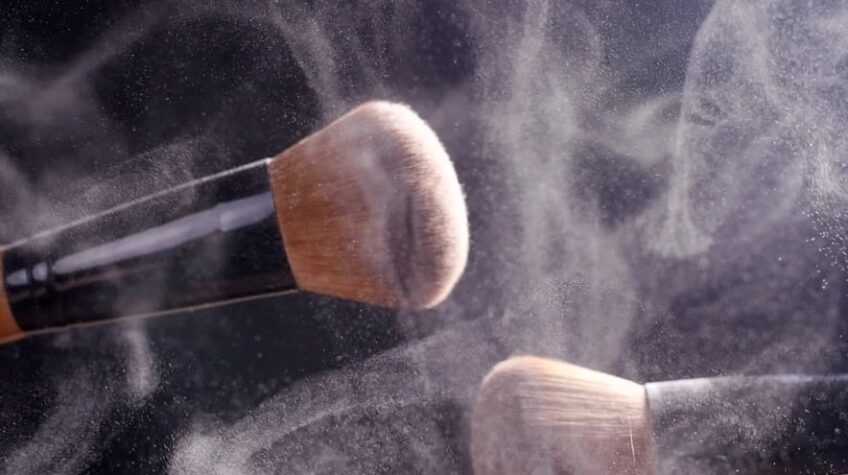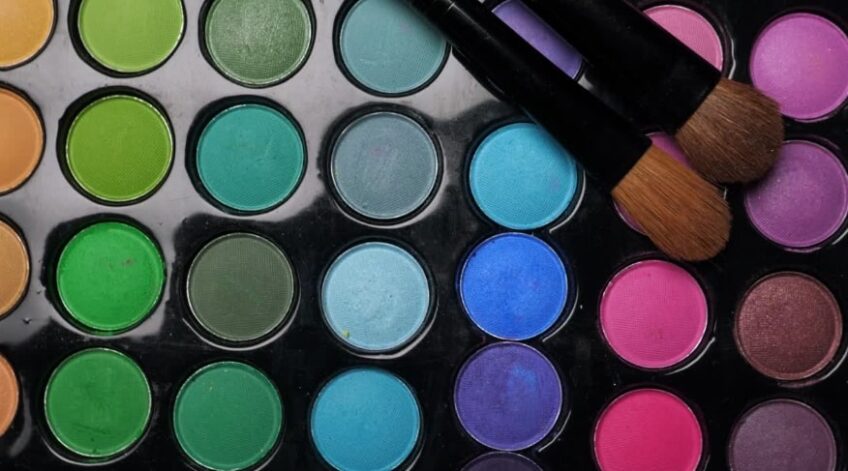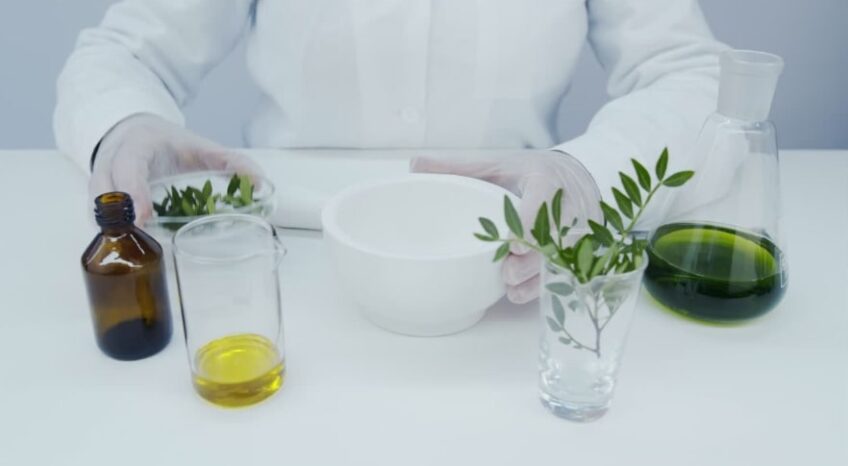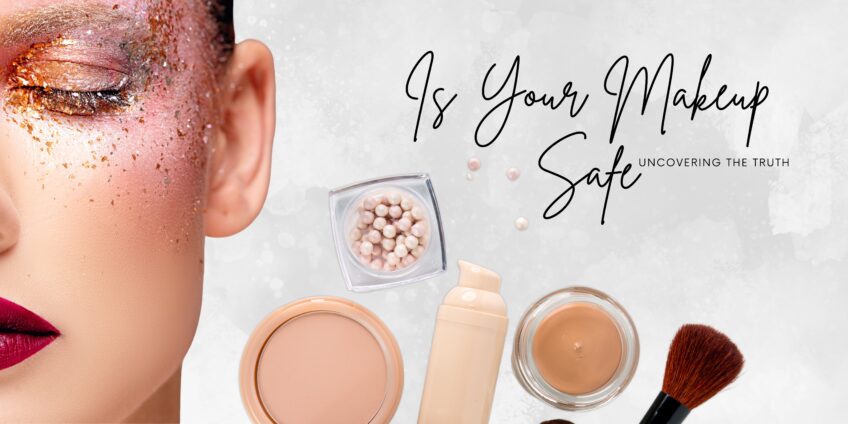Makeup has become an increasingly important part of many people’s daily routines, especially in the beauty and fashion industries. It can be used to enhance a person’s look or make them stand out from the crowd. However, there are concerns that some makeup products contain dangerous levels of toxic metals, such as lead and copper.
This article will provide an overview of the potential risks associated with using makeup that contains heavy metals. It will also discuss ways to minimize exposure and seek help if you think you might have been exposed to hazardous levels of these substances.
Heavy Metals in Makeup
They have been found in many cosmetic products, including makeup and makeup brushes. This can be concerning, as their presence in our products can have a negative impact on our health.
In this article, we will explore the potential risks of exposure to heavy metals in makeup, and what steps you can take to protect yourself.
What Products Contain Heavy Metals?
These compounds are often found in products that contain certain pigments and dyes, including color cosmetics, sunscreen, and lip products. Although small amounts of heavy metals can occur naturally in raw materials used to make these products, some manufacturers add them to enhance the product’s performance or color.
The most common types of heavy metals found in cosmetics include iron oxides, manganese, and chromium. However, there are other less commonly found toxic materials such as lead, arsenic, and mercury. Some studies have linked these metals to adverse health conditions such as cancer when used frequently over prolonged periods of time.
In order to understand what makeup contains heavy metals and the risk they pose, here is a list of specific beauty products you should be aware of:
- Powders: Found in talc-based powder foundations that are meant for blotting or setting makeup. Powder blushers or eyeshadows tend to contain iron oxides which can potentially cause irritation to the skin if not properly tolerated.
- Eye makeup: Mascara is a popular product known for containing trace amounts of lead which has been linked with eye allergies as well as pulling down natural lashes if worn too much or too frequently. Make sure to purchase long-wearing mascaras from reputable brands with safe ingredients listed on the label!
- Lipsticks: These often contain high levels of cadmium due to their higher concentrations of pigments for easier application without clumping or flaking off the lips. As with any product containing metal pigments, lipstick can act as an irritant on sensitive skin and should only be used sparingly.
How Much Heavy Metals are in Makeup?
They are found in trace amounts naturally in the environment, but there is increasing concern about the number of heavy metals present in cosmetics. Depending on the product, heavy metal content can range from minimal to substantial.
There are many sources of heavy metals—including lead, arsenic, cadmium, mercury, and aluminum—so it may be difficult for consumers to know exactly what substances are in their makeup and how much their products contain.
The presence of certain heavy metals can also depend on a product’s production method. For example, specific colors such as blues and greens may require additional chromium or cobalt compounds which generally contain higher levels of these particular toxins.
Additionally, some makeup ingredients like mineral-based colors can naturally have a high concentration of other trace elements that may be harmful if exposed over prolonged periods of time at high levels.
The amount of harm caused by cosmetic products with heavy metal content depends upon a variety of factors such as true concentrations and individual susceptibility to the chemical components present.
As there is no global skincare standard marketed specifically toward cosmetics safety that applies to all countries yet, it is important for consumers who want to take safety precautions with their cosmetics usage to stay informed about potentially hazardous compounds present in any cosmetic products they purchase.
Potential Health Effects

In recent years, the ingredients in makeup have become a hot topic of discussion. With reports of heavy metals found in makeup, it is important to take a closer look at the potential health effects of using makeup that contains these toxins.
This section will discuss the potential health effects of using makeup with heavy metals in it.
Short-term Effects
In cosmetics, they may be added as pigments to colors or preservatives. They can also be contaminants that make their way into the products through exposure to the atmosphere. The potential short-term health effects depend on the level of exposure and type of metal ingested or inhaled.
Immediately following exposure, it is possible for some people to experience nausea and vomiting, burning in the mouth and throat, difficulty breathing, or a metallic taste in the mouth. Other symptoms such as yellowing skin, bloody urine, abdominal pain, and weakness may occur with more significant exposures.
Additionally, environmental exposures could produce general discomfort leading to fatigue, headaches, and soreness in bones and joints. In extreme cases of inhalation or ingestion (depending on the metal), results could include anaphylaxis shock or even death due to slowed heart rate caused by cardio-toxic heavy metals.
If you believe you have been exposed to a damaging amount of any of these heavy metals listed above via a cosmetic product, you should contact your healthcare provider at once for guidance.
Long-term Effects
In addition to short-term health effects, certain heavy metals used in makeup can build up in the body over time and lead to long-term health effects. Some of the most concerning metals used in cosmetics are lead, arsenic, and mercury. With repeated use, these may accumulate in body tissues and organs.
Lead can cause reproductive problems, and neurological development issues and interfere with kidney function. Arsenic should be avoided due to its link to cancerous tumors. Mercury can create serious nervous system damage, including tremors and memory difficulty.
It is important to know what types of cosmetics are being applied on a daily basis and whether they contain any dangerous ingredients that have the potential for causing harm over time. Look at labels carefully when purchasing products, avoid long-lasting powders or metallic eye shadows if possible, and check product recall lists online for updates about the current conditions of items on the market.
How to Avoid Heavy Metals in Makeup

Heavy metal contaminants such as lead, cadmium, and arsenic, among others, present a concern for many makeup users. Excess exposure to these contaminants can lead to a range of health issues, such as headaches, rashes, and even cancer.
It’s important to be aware of how to avoid heavy metals in makeup. In this article, we’ll explore the steps you can take to reduce your exposure to heavy metals in makeup.
Read Labels
Reading labels is one of the most important steps in avoiding potential health risks. Consumers should look for companies that produce a makeup with natural ingredients and avoid makeup that contains heavy metals.
Ingredients to watch out for on labels include talc, bismuth, aluminum, cobalt chloride, chromium oxides, lead acetates, and manganese violet. Commonly used metal-based cosmetic preservatives such as parabens should also be avoided.
It’s always best to select products made by reputable companies whose ingredients have been thoroughly tested and reviewed before going to market. Additionally, it’s important to research any claims associated with product labels if you find them questionable or are unfamiliar with certain terms.
Checking for up-to-date third-party certifications can be a good way of verifying a product’s safety concerns and quality assurance standards.
Always follow directions carefully as heavy metals can be absorbed into the skin if makeup is left on for excessive amounts of time or is applied too often.
Look for Natural Ingredients

When searching for makeup products that are free from heavy metals, it is important to look for products containing natural ingredients rather than those with synthetic chemicals.
Synthetic chemicals are often the source of heavy metal pollutants and can contain impurities such as lead, arsenic, mercury, chromium, antimony, and cobalt. Natural ingredients will usually be derived from plants and minerals which have been processed in a way that increases their safety for a user.
Some natural ingredients that should be looked out for when searching for Heavy Metals free makeup products are:
- Jojoba oil – this is naturally rich in Vitamin E, and helps nourish the skin while providing protection against environmental damage
- Argan oil – this oil is derived from argan nuts and is rich in Vitamin E. It has anti-inflammatory properties as well as being an antioxidant which reduces the signs of aging
- Kaolin clay – this is a fine white powder clay which when used along with other ingredients (such as aloe vera or avocado oil) will create a product that helps draw impurities out of the skin while providing gentle exfoliation
- Rosehip seed oil – largely composed of omega-3 fatty acids, rosehip seed oil has antioxidants that can help protect against sun damage as well as wrinkles
- Shea butter – extracted from the nut of the African shea tree, well known for its moisturizing properties perfect for sensitive skin
Following these tips should ensure you’re purchasing store-bought cosmetics free of heavy metals while still obtaining your desired beauty goals.
Choose Makeup from Reputable Brands
When it comes to avoiding harmful heavy metals in makeup, it’s best to begin by looking for products from brands you can trust. Large, well-known companies will likely take the necessary steps to ensure their products are free from contaminants; this could include conducting third-party testing or using ingredients responsibly sourced from verified suppliers.
Additionally, since regulations may vary from country to country, you’ll want to make sure you’re buying domestically and that your store follows the regulations of its jurisdiction.
It’s also important to do your research on independent brands as well. Check out their websites and study ingredient lists so that you know exactly what is going into your cosmetic products.
Look for labels such as ‘Clean Beauty’ or ‘Natural Beauty’, which indicate they are formulated without any synthetic preservatives, dyes, and fragrances found in many conventional drugstore cosmetics. Look for certification seals such as the U.S. Diplomatic Organic Standard (USDS) or the Food and Drug Administration (FDA).
These standards have strict guidelines regarding heavy metals and other contaminants that allow consumers to be sure their product is safe for use without health risks due to high levels of toxic substances in the makeup.
FAQs
How can I tell if my makeup contains heavy metals?
It can be challenging to determine whether your makeup contains them, as manufacturers are not required to list them on product labels. However, you can check the ingredients list for known colorants or research the brand’s reputation for safety and quality.
Are certain types of makeup more likely to contain heavy metals?
Some types are more likely to contain them, especially those with vibrant colors or metallic hues. These products often use pigments and colorants that may contain them. Examples include eyeshadow, lipstick, and blush.
Are there regulations governing heavy metal content in makeup?
There are regulations in place to limit their number in cosmetics. For example, the FDA has set limits on the levels of lead in color additives used in makeup. However, these regulations may not cover all of them or all types of cosmetics, and enforcement can vary by country.
How can I reduce my exposure to heavy metals in makeup?
Choose products from reputable brands that have a commitment to safety and quality. Look for certifications or statements regarding their absence. Additionally, consider using ones with natural or mineral-based ingredients.
Are natural or organic makeup products free of heavy metals?
Natural or organic makeup products may still contain them, as these elements can be present in the environment and contaminate raw materials. However, such products may have lower levels of them compared to conventional makeup.
How can I safely dispose of makeup containing heavy metals?
Contact your local waste management facility for guidance. They can provide information on proper disposal methods or direct you to a designated collection site.
Are there any health symptoms associated with heavy metal exposure from makeup?
Symptoms can vary depending on the specific metal and the extent of exposure. Possible symptoms include skin irritation, allergies, headache, fatigue, and neurological issues.
What should I do if I suspect heavy metal exposure from my makeup?
Discontinue the use of the suspected product immediately. Consult a healthcare professional for advice on any symptoms you may be experiencing and consider getting tested for heavy metal toxicity.
Are there any specific brands known for having heavy metals in their makeup?
It’s difficult to single out specific brands as having them in their makeup, as the presence of these metals can vary from product to product. However, it’s essential to research and choose brands with a reputation for safety and quality.
Conclusion
Ultimately, heavy metals are found in makeup products at varying levels. However, it is important to note that most products do not contain enough metals to reach regulated levels established by governmental health regulatory bodies.
Additionally, whether you choose to wear makeup with traces of heavy metals or prefer a more natural approach, there are many available options for both. Ultimately it is up to the face of each individual person what type of makeup product they feel comfortable using.
As long as products are used according to their approved directives and information provided on the labelling, then consumers have many choices available today.

